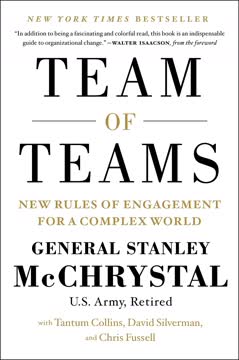つの重要なポイント
1. ビジネス成功に不可欠な学べるスキルセットとしての財務知識
私たちが使う「財務知識」という用語は、生まれつき持っているかどうかではなく、学べるスキルセットを指します。
起業家にとって必須。 財務知識は、財務諸表の理解、財務の芸術(見積もりと仮定)の認識、そして情報に基づいた意思決定のための財務データの分析という3つの主要なスキルセットを含みます。これらのスキルは、起業家がビジネスを効果的に管理し、ステークホルダーとコミュニケーションを取り、戦略的な選択を行うために重要です。
ビジネスのあらゆる側面に影響。 財務知識は、さまざまなビジネス機能においてより良い意思決定を可能にします:
- 販売とマーケティング:製品や顧客ごとの収益性の理解
- オペレーション:財務指標を通じた効率と生産性の評価
- 人事:報酬と財務パフォーマンスのリンク
- 戦略:異なる成長戦略の財務的影響の評価
財務知識を身につけることで、起業家は競争優位を獲得し、会社のパフォーマンスを向上させ、長期的な成功の可能性を高めることができます。
2. 財務の芸術を理解することで数字の背後にある見積もりが明らかになる
会計と財務は現実ではなく、現実の反映であり、その反映の正確さは簿記係、会計士、財務専門家が合理的な仮定を行い、合理的な見積もりを計算する能力に依存します。
数字は絶対ではない。 財務諸表には多くの見積もりと仮定が含まれます、例えば:
- 収益認識のタイミング
- 減価償却方法と資産寿命の見積もり
- 在庫評価技術
- 貸倒引当金
意思決定への影響。 財務の芸術を認識することで、起業家は:
- 財務報告書についてより良い質問をする
- 数字の中の潜在的なバイアスを理解する
- 財務データの微妙な解釈に基づいてより情報に基づいた意思決定を行う
- 財務操作が発生する可能性のある領域を特定する
財務の芸術的な側面を理解することで、ビジネスオーナーはより批判的で洞察力のある財務分析と管理アプローチを開発することができます。
3. 利益は見積もりであり、現金はビジネスの健全性の現実チェックである
現金はビジネスのパフォーマンスの現実チェックであり、キャッシュフロー計算書はその現実を明らかにします。
利益対キャッシュフロー。 利益は重要ですが、会計原則に基づいており、ビジネスの実際の現金状況を反映していない場合があります。主な違いには以下が含まれます:
- 収益認識対現金回収
- 費用の発生対現金支払い
- 減価償却のような非現金費用
キャッシュフロー管理。 起業家はビジネスの存続と成長を確保するためにキャッシュフローに焦点を当てる必要があります:
- コアビジネスの健全性を評価するための営業キャッシュフローの監視
- キャッシュコンバージョンサイクルの理解
- 効果的な運転資本管理
- 投資と資金調達に関する情報に基づいた意思決定
利益と並行してキャッシュフローを優先することで、ビジネスオーナーは紙上では利益が出ているが実際には現金が不足するという落とし穴を避けることができます。
4. 貸借対照表は会社の財務状況の包括的なスナップショットを提供する
この部分の冒頭で述べたように、賢明な投資家は通常、会社の貸借対照表を最初に精査します。
主要な要素。 貸借対照表は3つの主要な要素で構成されています:
- 資産:会社が所有するもの(例:現金、在庫、設備)
- 負債:会社が負っているもの(例:ローン、買掛金)
- 株主資本:株主に帰属する残余価値
分析力。 貸借対照表は以下の洞察を提供します:
- 流動性:短期的な義務を履行する能力
- 支払能力:長期的な財務安定性
- 効率性:資産がどれだけうまく活用されているか
- 資本構造:負債と株主資本の組み合わせ
貸借対照表を理解し分析することで、起業家は会社の財務健全性を評価し、潜在的な問題を特定し、資源配分と資金調達戦略に関する情報に基づいた意思決定を行うことができます。
5. 比率は会社の財務パフォーマンスと効率性に関する強力な洞察を提供する
比率の力は、財務諸表の数字自体が全体のストーリーを明らかにしないという事実にあります。
比率の種類。 主要な財務比率は4つのカテゴリーに分類されます:
- 収益性:例:粗利益率、純利益率
- 流動性:例:流動比率、クイック比率
- 効率性:例:在庫回転率、売上債権回転日数
- レバレッジ:例:負債比率
分析の利点。 比率は起業家に以下を可能にします:
- 時間をかけたパフォーマンスの比較
- 業界標準とのベンチマーク
- トレンドと潜在的な問題の特定
- 目標設定と進捗の監視
- データに基づいた意思決定
定期的に関連する比率を計算し分析することで、ビジネスオーナーは会社のパフォーマンスに関する深い洞察を得て、財務健全性と運営効率を向上させるための積極的なステップを踏むことができます。
6. 投資収益率(ROI)の計算は賢明な資本支出の意思決定を導く
資本投資を決定する前に分析を行い、その結果を考慮することをお勧めします。これが財務知識の実践です。
ROIの方法。 資本投資を評価するための3つの一般的なアプローチ:
- 回収期間:初期投資を回収するのに必要な時間
- 正味現在価値(NPV):キャッシュインフローとアウトフローの現在価値の差
- 内部収益率(IRR):NPVをゼロにする割引率
意思決定プロセス。 資本支出を評価する際には:
- 初期の現金支出を決定する
- 将来のキャッシュフローを予測する
- 適切なROI計算方法を適用する
- 定量分析と並行して定性的要因を考慮する
- 財務的および戦略的な考慮に基づいて情報に基づいた意思決定を行う
ROI計算を活用することで、起業家は設備、拡張、新規事業への投資に関するより客観的で財務的に健全な意思決定を行うことができます。
7. 運転資本管理はキャッシュフローと収益性の向上の鍵
貸借対照表の巧みな管理は財務の魔法のようなものであり、売上を増やしたりコストを下げたりせずに会社の財務パフォーマンスを向上させることができます。
運転資本の構成要素。 注目すべき主要な領域:
- 売掛金:回収プロセスの最適化
- 在庫:効率的な在庫管理の実施
- 買掛金:サプライヤーとの有利な条件の交渉
改善のための戦略。 起業家は運転資本管理を強化することで:
- 売上債権回転日数(DSO)の短縮
- 在庫回転率の向上
- サプライヤーとの関係を損なうことなく買掛金回転日数(DPO)の延長
- ジャストインタイム在庫システムの導入
- 顧客およびサプライヤーとのより良い条件の交渉
運転資本を効果的に管理することで、ビジネスオーナーは現金を解放し、資金調達コストを削減し、売上を増やしたり費用を削減したりせずに全体的な収益性を向上させることができます。
8. 財務知識のある企業文化の創造はより良いビジネス成果をもたらす
私たちはまた、財務知識指数が高い企業は、オーナーだけでなくマネージャーや従業員も含めて、より良いパフォーマンスを発揮すると信じています。
財務リテラシーの利点。 財務知識のある企業文化は以下をもたらします:
- すべてのレベルでのより良い意思決定
- 従業員のエンゲージメントとモチベーションの向上
- 運営効率の改善
- 個々の行動と会社の目標のより良い整合性
- 変化する市場条件への適応能力の向上
実施戦略。 財務知識のある企業を創造するために:
- すべての従業員に定期的な財務トレーニングを提供する
- 主要な財務指標を共有し、その重要性を説明する
- 財務事項についてのオープンなコミュニケーションを奨励する
- 個人およびチームのパフォーマンスを財務成果にリンクさせる
- オープンブックマネジメントの実践を導入する
組織全体で財務知識を育むことで、起業家はよりエンゲージメントが高く、情報に基づいた効果的な労働力を創造し、会社の全体的な成功と長期的な持続可能性に貢献することができます。
最終更新日:
FAQ
What's Financial Intelligence for Entrepreneurs about?
- Focus on Financial Understanding: The book emphasizes the importance of financial intelligence for entrepreneurs, helping them understand what the numbers really mean in their businesses.
- Key Financial Statements: It covers how to read and interpret the three major financial statements: the income statement, balance sheet, and cash flow statement.
- Practical Skills: The authors aim to equip readers with the skills to calculate critical ratios, understand cash flow, and analyze return on investment (ROI) to make informed business decisions.
Why should I read Financial Intelligence for Entrepreneurs?
- Essential for Entrepreneurs: This book is tailored specifically for entrepreneurs and business owners who may not have a financial background but need to understand financial concepts to run their businesses effectively.
- Real-World Applications: It provides practical examples and exercises that allow readers to apply financial concepts to their own businesses, enhancing their financial literacy.
- Avoid Common Pitfalls: By understanding financial statements and cash flow, entrepreneurs can avoid common pitfalls that lead to business failure, such as running out of cash despite being profitable.
What are the key takeaways of Financial Intelligence for Entrepreneurs?
- Profit vs. Cash: One of the main takeaways is that profit does not equal cash. Entrepreneurs must understand that a business can be profitable on paper but still run out of cash due to timing differences in revenue and expenses.
- Importance of Ratios: The book emphasizes the significance of financial ratios, such as profitability and liquidity ratios, which help assess a company's financial health and operational efficiency.
- Art of Finance: The authors highlight that finance is as much an art as it is a science, involving estimates and assumptions that can affect financial reports and decision-making.
What is financial intelligence, as defined in Financial Intelligence for Entrepreneurs?
- Skill Set: Financial intelligence is described as a set of skills that can be learned, enabling entrepreneurs to understand and interpret financial data effectively.
- Understanding Financial Reports: It involves the ability to read and analyze financial statements, recognize the implications of various financial metrics, and make informed decisions based on that analysis.
- Decision-Making Tool: Financial intelligence empowers entrepreneurs to assess their business's performance and make strategic decisions that drive growth and sustainability.
How does the income statement work in Financial Intelligence for Entrepreneurs?
- Revenue Recognition: The income statement records revenue when a product or service is delivered, not necessarily when cash is received, which can lead to discrepancies between profit and cash flow.
- Matching Principle: It follows the matching principle, which states that expenses should be matched with the revenues they help generate, affecting how profit is calculated.
- Profit Types: The book explains different forms of profit, including gross profit, operating profit, and net profit, each providing insights into various aspects of a company's financial performance.
What are the peculiarities of the balance sheet discussed in Financial Intelligence for Entrepreneurs?
- Snapshot of Financial Position: The balance sheet provides a snapshot of what a company owns (assets) and what it owes (liabilities) at a specific point in time, revealing the company's net worth or equity.
- Assets vs. Liabilities: It emphasizes the relationship between assets and liabilities, explaining how the balance sheet balances according to the fundamental accounting equation: Assets = Liabilities + Equity.
- Estimates and Assumptions: The authors point out that many figures on the balance sheet are based on estimates and assumptions, which can introduce bias and affect the interpretation of a company's financial health.
What is the significance of cash flow in Financial Intelligence for Entrepreneurs?
- Cash as a Reality Check: The book stresses that cash flow is crucial for business survival, as running out of cash is a common reason for business failure, even if the company is profitable.
- Types of Cash Flow: It categorizes cash flow into operating, investing, and financing activities, each providing insights into different aspects of a company's financial operations.
- Monitoring Cash Flow: Entrepreneurs are encouraged to monitor cash flow closely to ensure they can meet obligations and invest in growth opportunities, highlighting the importance of cash management.
How do ratios help in understanding financial health according to Financial Intelligence for Entrepreneurs?
- Quick Assessment: Ratios provide a quick way to assess a company's financial health, allowing entrepreneurs to compare their performance against industry benchmarks or historical data.
- Types of Ratios: The book discusses various types of ratios, including profitability ratios, liquidity ratios, and efficiency ratios, each serving a different purpose in financial analysis.
- Informed Decision-Making: By understanding and analyzing these ratios, entrepreneurs can make informed decisions about operations, investments, and financial strategies to improve their business performance.
What is the relationship between profit and cash flow as explained in Financial Intelligence for Entrepreneurs?
- Different Metrics: Profit is recorded on the income statement based on revenue recognition and expense matching, while cash flow reflects actual cash transactions, leading to potential discrepancies.
- Impact of Timing: The timing of cash inflows and outflows can create situations where a business is profitable but lacks sufficient cash to operate, emphasizing the need for careful cash management.
- Long-Term Viability: The book highlights that both profit and cash flow are essential for long-term business viability, and entrepreneurs must understand how to balance the two for sustainable growth.
What is the cash conversion cycle, and why is it important in Financial Intelligence for Entrepreneurs?
- Definition of Cash Conversion Cycle: The cash conversion cycle measures how effectively a company collects cash from its sales. It is calculated as DSO + DII - DPO, where DSO is days sales outstanding, DII is days in inventory, and DPO is days payable outstanding.
- Impact on Working Capital: A shorter cash conversion cycle indicates that a company can recover its cash more quickly, reducing the need for external financing. This efficiency can lead to improved cash flow and financial stability.
- Strategic Management Tool: Understanding the cash conversion cycle allows entrepreneurs to identify areas for improvement in their operations. By managing DSO, DII, and DPO effectively, businesses can enhance their overall cash position.
How can I improve my company’s cash flow according to Financial Intelligence for Entrepreneurs?
- Monitor Receivables: One effective strategy is to closely monitor accounts receivable and reduce days sales outstanding (DSO). This can be achieved by implementing stricter credit policies and following up on overdue invoices.
- Manage Inventory Efficiently: Reducing excess inventory can free up cash. Techniques like just-in-time inventory management can help minimize holding costs and improve cash flow.
- Negotiate Payment Terms: Entrepreneurs can negotiate better payment terms with suppliers to extend days payable outstanding (DPO). This allows the company to retain cash longer while still maintaining good vendor relationships.
What are the best quotes from Financial Intelligence for Entrepreneurs and what do they mean?
- "Cash flow is the lifeblood of any business.": This quote emphasizes the critical role of cash flow in sustaining operations and funding growth. Without adequate cash flow, even profitable businesses can face financial difficulties.
- "Understanding your financials is not just for accountants.": This statement highlights the importance of financial literacy for all entrepreneurs, not just those with a finance background. It encourages business owners to engage with their financial data actively.
- "Ratios are a window into a company’s financial statements.": This quote underscores the value of financial ratios in providing insights into a company's performance. Ratios help simplify complex financial data, making it easier to identify trends and make informed decisions.
レビュー
『起業家のためのファイナンシャル・インテリジェンス』は、金融概念へのアクセスしやすいアプローチで高く評価されている。読者は財務諸表、比率、ビジネス評価方法の明確な説明を高く評価している。多くの人々が、ビジネスの財務を理解しようとする起業家や非金融専門家にとって非常に貴重であると感じている。この本は、実践的な例、現実世界での応用、学習を強化するための演習が称賛されている。経験豊富な読者の中には内容が基本的すぎると感じる人もいるが、ほとんどのレビューアーは、ファイナンシャル・インテリジェンスを育成し、情報に基づいたビジネス判断を行うための必須ガイドと見なしている。
Similar Books
















